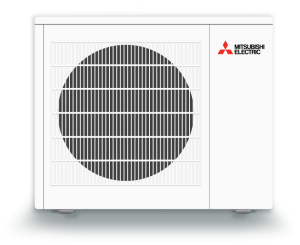
As Chicago residents know all too well, weather in the Windy City can swing from scorching summers to bone-chilling winters. Finding an efficient, flexible, and cost-effective heating and cooling solution is key to staying comfortable year-round. One increasingly popular option is the mini-split HVAC system. Here’s a closer look at what a mini-split is, why it’s ideal for Chicago homes, and what to expect during installation.
What is a Mini-Split HVAC System?
A mini-split system, also known as a ductless HVAC system, consists of an outdoor condenser unit and one or more indoor air-handling units. These systems allow for zoned temperature control, meaning you can heat or cool specific rooms independently. They’re especially useful for older homes without existing ductwork or additions where extending ducts is impractical.
Why Mini-Splits Are Great for Chicago Homes
1. Energy Efficiency Mini-splits use inverter technology to adjust compressor speed and maintain consistent indoor temperatures. This results in less energy consumption compared to traditional systems, a major plus when utility bills spike in Chicago’s extreme weather.
2. Zoned Comfort Chicago homes often have rooms with different heating and cooling needs. Mini-splits allow customized climate control for each zone, improving comfort and reducing wasted energy.
3. No Ductwork Required Many historic homes in Chicago weren’t built with ductwork. Mini-splits provide a modern HVAC solution without the expense or disruption of adding ducts.
4. Year-Round Use Mini-splits offer both heating and cooling capabilities. With Chicago’s varying seasons, a system that handles both functions efficiently is a smart investment.
Installation Process
1. Site Evaluation A licensed HVAC contractor will assess your home to determine the number and placement of indoor units. Factors include room size, insulation, and window placement.
2. Equipment Selection You’ll choose a system size and brand suited for your needs. Mitsubishi / American Standard and Daikin are popular mini-split brands known for reliability in cold climates.
3. Professional Installation The outdoor unit is typically mounted near the foundation of the building. Indoor units are all usually wall-mounted. Installation includes drilling a small hole for the conduit that houses the power cable, refrigerant tubing, and drainage. Service Pro Titans’ techs are trained professionals and can complete your mini-split installation with ease.
4. System Testing After installation, your technician will test the system to ensure each unit is working properly and provide guidance on operation and maintenance.
Chicago-Specific Considerations
1. Cold Weather Performance Make sure your mini-split system is rated for low-temperature operation. Many newer models can heat effectively in sub-zero temperatures, but it’s important to verify this feature.
2. Permits and Codes HVAC work in Chicago may require permits and must meet local building codes. Hiring a licensed contractor ensures compliance and safety.
3. Rebates and Incentives Check for energy-efficiency rebates from ComEd or federal tax incentives. These can help offset the initial installation cost.
Final Thoughts
Installing a mini-split HVAC system in Chicago is a smart, future-proof investment that brings energy savings, flexibility, and comfort. With the right system and professional installation, you can enjoy reliable heating and cooling no matter what the Midwest weather throws your way.
